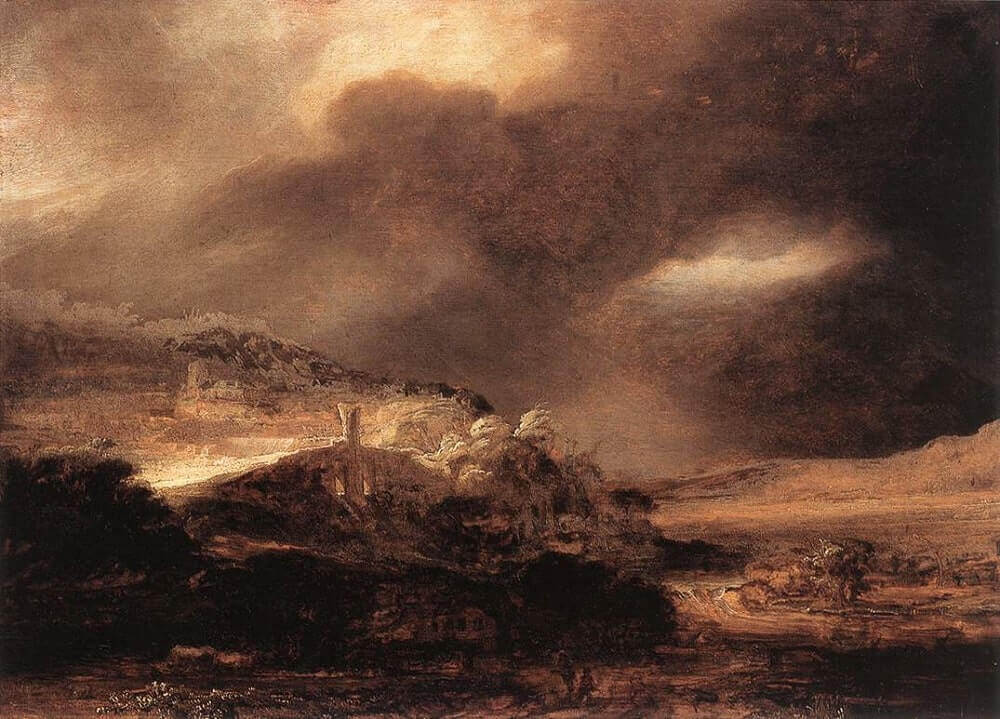Stormy Landscape, 1638 by Rembrandt

Rembrandt produced dew early landscape works but when he became a property owner, he seemed to develop more of an interest in depicting the world around him. His increasing interest in landscapes grew during Saskia's illness and after her death, so it may have provided some consolation for him. He took as his inspiration the works of Hercules Seghers (1589-1638), who created imaginary mountain views, sometimes also taking real locations but adding extra features from his imagination. Rembrandt owned a number of works by Seghers and, like him, he often chose a view with which he was familiar but then embellished it with additional features. From his home he only needed to go for a short walk to see fields, trees, water, boats, houses and mills.
Stormy Landscape, 1638 is one work which can be located as a depiction of a real place. It shows a view of a tributary to the Amstel River near the Oude Kerk, in Amsterdam. Most of his other landscape works keep largely to the imaginary, with him using unusual colour effects such as dramatic chiaroscuro. In this painting, he creates the atmosphere of a cold, icy day with a vast sweep of dark winter sky.
In total Rembrandt painted only around 14 landscapes but he created many more using etchings and drawings. He made many drawings - at one time thought to be as many as over 1,400 - but some of these have now been attributed to his students or followers, leaving around 800 thought to be by Rembrandt himself.




















